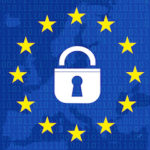The second PCMA Global Corporate Summit, being held this month at the Milano Congressi (MiCo) convention center in Milan, builds on the success of the inaugural Global Corporate Summit, held in Glasgow in July 2012, and follows the same invitation-only, hosted-buyer model. Together with a small group of industry partners, corporate planners will participate in hands-on sessions conducted by subject-matter experts, and over the course of three days apply their newfound knowledge to executing business events on the global stage. Open-agenda time also is built into the program for participants to direct their own conversations.
Klaus Andreas Span, executive of CoE (Center of Excellence) product management and business development for IBM, found the first summit valuable in providing “a framework to discuss current pressing issues with my industry peers. It also provided an opportunity for me to hear experts speak on globalization, technology, and outsourcing, to mention a few areas that impact my business today.” Span, who is based in Germany, said he “cannot wait to re-engage” with colleagues in Milan to continue the conversation.
Helping to forge that engagement will be Stephen Archer, a U.K.-based business and economic analyst, who, in addition to presenting the summit’s opening session, “Globalization: Understanding the Changes, Risks, and Opportunities,” will serve as facilitator for the entire program. Other speakers include Chris Meyer, CEO and Paolo Zeppa, senior vice president of strategy and planning, respectively, for George P. Johnson, who will jointly present a session on “Data-Driven Experiences”; Nigel Jeremy, former global head of learning, recruitment, and organization development for Marks & Spencer, who will speak on “Leading Global Teams to High Performance”; and Ben Hammersley, London-based Internet technologist and author, who will explore the impact of technology on global events.
Convene spoke to the presenters in advance of the summit. While we can’t deliver the unforgettable meals, rich conversations, stunning historical sites, and awe-inspiring architecture that the group will experience in Milan, we’ve captured some of their key insights around managing global events — from understanding cultural norms, to building global teams, to designing experiences that make emotional connections. Mangia!
STEPHEN ARCHER
What do you expect summit attendees will gain from your talk and facilitation?
An understanding of the way that the global economy and the shift in power or shift in sophistication of economies is changing — and how that is opening up opportunities for meeting planners to exploit these changes, exploit new locations, exploit new centers of excellence depending on the subject matter. Looking at the [planners we will have at this summit], they represent [industries] such as software, financial services, health care, and each of those actually have an interest that is likely to be connected in certain locations and certain economies because of the way economies are evolving around those types of markets.
That’s at one level. I think the other level is to consider more dynamic opportunities that are coming out of the changes in the global economy. A few years ago, everyone would have said, for example, let’s do a meeting in one of the BRIC [Brazil, Russia, India, and China] countries because of their emerging economies. And that’s fine, except for the fact that all of the BRICs are kind of stalling right now or they’re not advancing at quite the pace that they were — or they’ve got social discord or social unrest. Whereas there are other economies and other centers of excellence, if you will — it might be Singapore for health care or Indonesia for energy — which actually present great opportunities.
So there are new emerging economies, new emerging cultures, and new emerging influences in the globalization of industry segments, but also a shift in the business culture. It would be a great opportunity for planners to consider new locations according to this global knowledge economy. [I plan on] helping people understand how to identify where those emerging economies or emerging cultures are.
What is your presentation and facilitation style?
Maximum involvement — I stir some thinking up and challenge their paradigms. It can be huge fun ultimately getting them to join the dots and see how to resolve their challenges in the most constructive way to their stakeholders.
CHRIS MEYER AND PAOLO ZEPPA
Data-driven experience design: What does that mean?
PZ: What we’re going to be looking at are the various different types of technologies that enable us as marketers to use data — on the front end, to plan for effective experiences; during the actual events, to enable us to use that data to help create more meaningful experiences; and on the back end, to be able to make sure that we’re able to act on the results of those events.
So essentially, the session that we would like to structure is one that leans forward and is participatory and blends both the practice of experience design, where you’re really setting your compass around what it is that you’re looking to accomplish with each event, and then looking at technology and the very different types of tools that are out there to [help make] decisions as to what it is that we should incorporate.
CM: I like to say there is a tornado of data that’s thrown off around any kind of event or experience. That data may come from all different places — it may be preexisting data coming from a customer-profile system, it may come from registration, surveys, RFID, all those types of things. What we see in companies that are more advanced in leveraging that data, to Paolo’s point, they’re able to design a more personalized experience for the users. It’s also critical to properly leverage that data to be able to truly measure the business impact for whoever is hosting the event, regardless of what the objectives are.
How do you think most corporate planners approach data?
CM: I think as an industry, we’re still looking at data from a tactical perspective. We’re looking at it in the context — especially from an event-planning perspective — of I need to do registration, I need to do lead retrieval. What we as an industry haven’t done a good job of is actually pulling that and taking a look at how … data can inform better experiences. This isn’t about using data to replace experiences. It’s about using data effectively to deliver better experiences and to measure the experiences in a much more effective way.
Are there new tools that corporate meeting planners need in order to collect this data, to maximize, to analyze any of those things?
CM: Yeah, and I think that one of the things we want to do in our session is to show a blend of more of the bleeding-edge type of examples that are really exciting — some of the things that track audience flows across complex expo halls to show not just maps in terms of where the activity is, but then being able to drill down to see, okay, so at a certain time, there was a lot of interest that happened at the IBM booth or this portion of the IBM booth.
PZ: And we look at an experience, whether it’s a public auto show or proprietary conference, [using] a certain term called “digital landscaping.” So when we’re designing the experience, we’re also looking at the landscape on how do you use technology and data to enhance that experience? And starting with what you want to accomplish and then backing into what the tools may be. And sometimes it’s custom-written tools, but a lot of times it’s tools that are available today.
CM: I think what is happening here is that companies like Salesforce and IBM and others are realizing the true business return on experiential portfolios. So we’re finally, as an industry, kind of getting our rightful place in the marketing niche. Because traditional advertising and broadcasting isn’t delivering the type of results that an experiential portfolio does — that make emotional connections between their customers or their prospects and the brand.
What would you say to corporate planners who are attending this summit who really don’t have that kind of support from their organizations?
CM: It really depends a little bit on the environment they’re in, but I think they need to find a way to get visibility on the return on the events and experiences that they deliver. And [sometimes] that means a tighter connection with sales. In some cases, you have event marketing kind of happen independently — especially on the corporate side, not as much on the association side — of the sales organization. So collaborating with sales and getting to the point where sales is asking marketing to actually put on events because they understand the sales impact — just that switch right there is very dramatic inside of an organization.
But you first have to start by understanding it and then being able to come up with some type of business metrics or dashboard. You know, when I talk to CMOs and I ask them, “Do you have a dashboard of the results of your event?” — nine times out of 10, they say they don’t but they want it. Because, obviously, it shows the impact or the status of the portfolio.
Do you find that some corporate planners feel a little overwhelmed by the prospect of data collection and analysis?
CM: You know, it’s interesting. I was speaking at a recent event and someone came up and asked me a question afterwards — it was a corporate planner. It was almost positioned like, “Why should I care about this?” If you don’t care, you’re going to make yourself irrelevant.
PZ: It’s a mindset.
CM: Yeah, it is a mindset. We have lots of clients who actually admit they don’t get it, but they do a really good job of finding someone on their team who does get it and understands how to collaborate. You don’t have to be the expert yourself.
Can you elaborate on the experiential aspect of event design?
CM: For years, we’ve been using “experience marketing” kind of as a tagline within the agency of George P. Johnson. And to us, we prefer that term because it does kind of help you to transcend and not look at an event with one lens. Because any kind of event is truly an experience, and designing that experience to create emotional connections is what it’s all about. And that experience has multiple parts to it.
So for us, it just kind of changes the game and the thinking to say, hey, we’re not only designing an event that seems to have a point in time, we’re designing an experience, which has a continuum and multiple touch points, both physical and digital.
It’s an amazing time for us in the event and experiential world, because these things are all coming together. We do amazing things [at meetings]. But quite frankly, we need to lean forward more as an industry and we have to be a little bit more confident in what we do and the business impact that these experiences deliver. It’s just something that we haven’t done. And part of the reason I believe we haven’t done it is because we haven’t had the data to support us.
What is the main challenge of managing teams in other countries remotely?
You can be on videoconference, but very often you’re dealing through email or chatting over the phone, so you don’t get the opportunity to have the full visceral face-to-face interaction. Cultural diversity [is important, but] you know, human beings just being human, [many people think] that the culture they grew up in is the absolute norm. And typically where they live, it is the norm. But you’re talking about different people in different regions of the world — the norms are quite different in those countries.
So being curious and open-minded to business being conducted in a slightly different way and [understanding that] different isn’t always wrong, it’s not always bad. Different is just different.
What do great teams do routinely?
It’s about having a culture of high support between each other — but also high challenge between each other is absolutely mission-critical. And what comes of that, to operate those two dynamics effectively, is a high degree of trust that needs to be built across the entire team, so that if somebody is actually pushing you, you know and trust [that] it’s coming from a good place, which allows you to respond in a much more effective way than if you were being attacked. Also key to success here is that you [as a leader] might be very different [with each team member] and much more culturally aligned with what they need to hear.
In other words, there might be different values? How would you say transparency as a leadership trait is considered within different cultures?
If you mean that as being open and direct, there are different cultural approaches to that. So if we take China, it’s absolutely fine to be open and direct on a one-on-one basis. But it depends on what you’re being open and direct about — if, [as a result of that interaction, that individual is going to experience] a loss of face, or it will make that person feel less respected, then you have to deal with that in different ways than you would in the Western world. So, for example, if you have a performance issue that you want to discuss with an individual in the Western world, there is a typical transaction that takes place, which is stating facts. Give some positive feedback first, drop some constructive or negative feedback in the middle, and then pick up on the positive at the end. But, nonetheless, open and direct in the conversation. It’s called the sandwich tactic.
In China, you need to understand the concept of [saving] face. Equally, in other countries, very often in the Middle East, there is a big human-relationship dynamic that goes on. So [say, for example, that] someone specific is doing a good job for you, and you walk into the office or you’re in a videoconference with 20 people around the room. You might, in the Western culture, choose to pick that person out of the audience and congratulate him in front of everybody else.
If you do that in certain countries in the Middle East and in parts of China, that can become problematic for you because they have the highest concept of team, so if you’re going to praise, you need to praise the team as a whole and don’t single out an individual. And if you’re going to single out an individual, do it quietly one on one, rather than a group dynamic. So it’s these subtleties that are quite important when you’re trying to get the best out of your team of international individuals.
What role do you see face-to-face meetings playing in engaging teams, particularly those dispersed globally?
Cost constraints are always going to be a little bit of a barrier to lots of travel. But I do think it’s essential in certain cultures to actually have a face-to-face relationship. Email, social media, videoconferencing — all of that is absolutely vital to global business. But we should never forget that face-to-face interaction with individuals, being able to look people in the eye — it’s really important to have a conversation, be able to share in some cultures in some social event together. I think there will always be a need for that in a globalized world. But we have to rely on technology to minimize it where it’s appropriate. Nonetheless, face-to-face will always have a place if we’re going to run truly great teams. It’s about making it count when you’re with people




